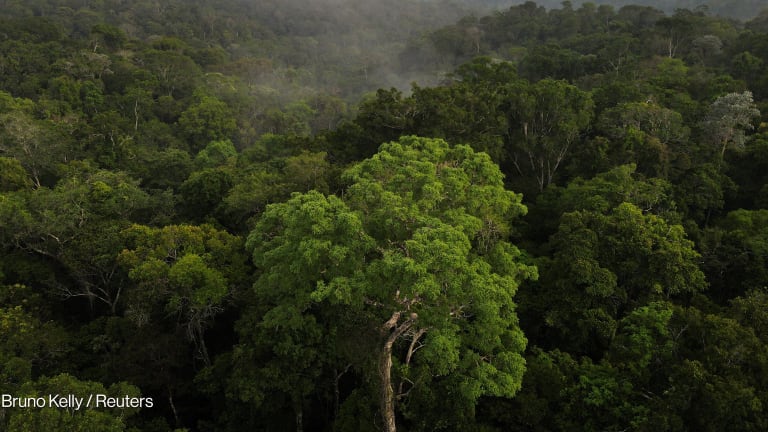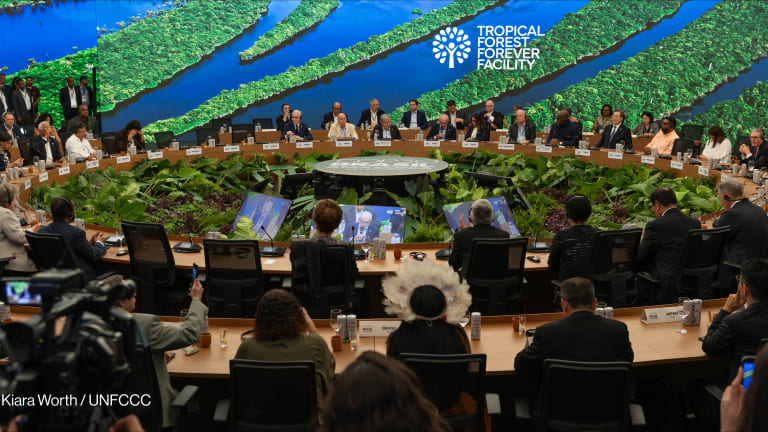In the lead-up to the 30th United Nations Climate Change Conference, or COP30, in Belém, Brazil, in November, the Brazilian government is preparing to launch a new fund that will measure which nations have done a good job at preserving their forests and reward them based on that data.
The fund called the Tropical Forest Forever Facility, or TFFF, was originally announced at COP28 in Dubai in 2023. However, a new document acquired by Devex outlines how the fund will work and who will participate in discussions about its structure.
The document will be discussed today and tomorrow at a closed-door meeting in London of delegates from 12 countries that have agreed to partake in the fund. In addition to Brazil, this includes tropical forest countries such as Colombia, the Democratic Republic of the Congo, Ghana, Indonesia, and Malaysia. Nontropical forest countries of France, Germany, Norway, the United Arab Emirates, the United Kingdom, and the United States will also participate.








